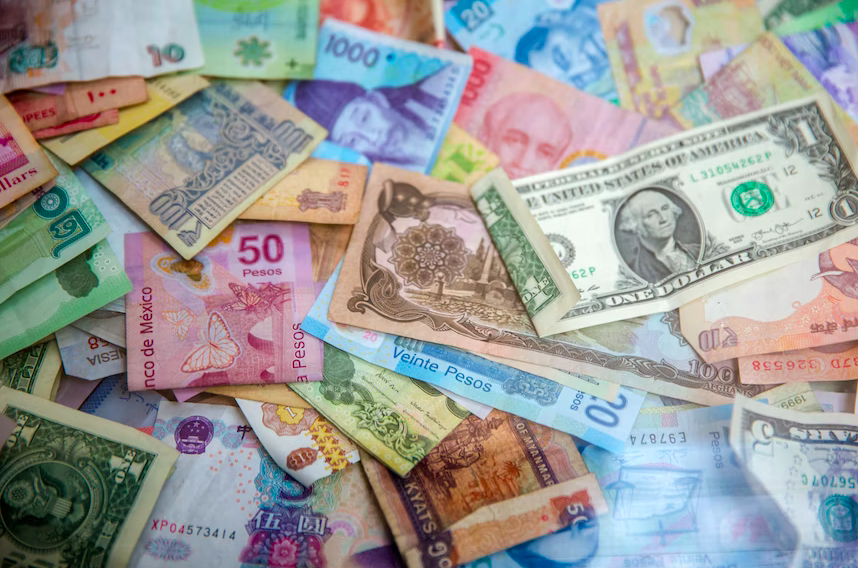In the dynamic global financial landscape, currencies play a pivotal role in shaping economic fortunes. While some currencies bask in the limelight, others remain hidden gems, overlooked and undervalued.
Understanding the factors that contribute to the undervaluation of certain currencies can shed light on potential opportunities and risks in today’s interconnected markets. It is also very important to traders as it directly impacts their profitable opportunities, long term strategies for the currency market and risk management strategies.
In this article, we delve into the intriguing realm of the most undervalued currencies worldwide, exploring the complex interplay of economic indicators, geopolitical dynamics, and market sentiments that define their current standing. Unraveling these hidden treasures offers valuable insights for investors and economists alike, as we navigate the complexities of international finance.
Top Undervalued Currencies
VND
The Vietnamese Dong is considered one of the most undervalued currencies primarily due to Vietnam’s economic factors and currency management policies. The country’s relatively low GDP per capita, high inflation rates, and trade deficits have contributed to market apprehension about the Dong’s true value.
Additionally, the Vietnamese government has actively managed the exchange rate to bolster its export competitiveness, intentionally keeping the Dong undervalued compared to other regional currencies. These factors have led investors and economists to view the Vietnamese Dong as undervalued, despite the country’s rapid economic growth and increasing foreign investment in recent years.
LAK
Lao or Laotian Kip (LAK) has been considered a significantly undervalued currency for various reasons. One of the key factors is Laos’ relatively small and less diversified economy, which may lead to limited confidence from international investors. The country’s dependence on agricultural commodities and remittances also affects the Kip’s value, as fluctuations in commodity prices and remittance inflows can impact the currency’s stability.
Moreover, Laos’ trade deficit and current account imbalances can create pressures on the Kip’s value. The government’s currency management policies and limited foreign exchange reserves may further contribute to the Kip’s undervaluation, as it limits their ability to intervene in the foreign exchange market effectively. Undervalued currencies like the Lao Kip may present challenges for the country’s economic stability and can impact foreign investment and trade dynamics.
UZS
Uzbekistani Som (UZS) has been considered undervalued due to several factors. One of the primary reasons is Uzbekistan’s historically closed economy, which limited foreign investment and trade opportunities, leading to lower demand for the Som in the international market.
Additionally, the country’s complex and restrictive currency exchange policies, in the past, have deterred foreign investors and hindered the development of a transparent foreign exchange market. The lack of free convertibility and limited access to foreign currency for businesses and individuals contributed to the Som’s undervaluation. Moreover, Uzbekistan’s economic dependence on commodity exports, particularly in the cotton and natural gas sectors, exposes the Som to fluctuations in commodity prices, affecting its overall valuation.
GNF
Guinea, the country that uses the Franc as its official currency, faces economic challenges that impact the currency’s valuation. One of the key factors contributing to the undervaluation is Guinea’s heavy reliance on commodity exports, particularly minerals like bauxite and gold. Fluctuations in commodity prices in the international market can significantly affect Guinea’s export revenues and, consequently, the value of the Guinean Franc.
Political instability and governance issues in the country can also influence investor confidence and affect the currency’s perceived value. Additionally, limited foreign investment and development in the country’s economic infrastructure may hinder the Franc’s appreciation against other major currencies.
TRY
Turkey has faced significant economic challenges, including high inflation rates, large current account deficits, and mounting public debt. The country’s political uncertainties and geopolitical tensions have also added to market apprehensions about the Lira’s value. But as they’re-selected Erdoghan, it is expected that instability in currency value will maintain in the long term. These factors, combined with the lack of confidence in Turkey’s monetary and fiscal policies, have contributed to a lack of demand for the currency.
Moreover, Turkey’s dependence on foreign capital inflows to finance its deficits makes the Lira vulnerable to sudden shifts in investor sentiment and can lead to sharp depreciations in its value.
